Technology
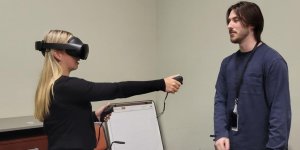
Simulated populations, virtual reality and non-player characters sound like components of a modern video game. In fact, a team of researchers at the Department of Energy’s Oak Ridge National Laboratory is using virtual reality to understand normal and abnormal human behavior in a given location – specifically, a nuclear reactor. »

Researchers at the UK Atomic Energy Authority (UKAEA) and the University of Bristol have developed a diamond battery powered by carbon-14 decay, capable of providing tiny amounts of power for thousands of years. »
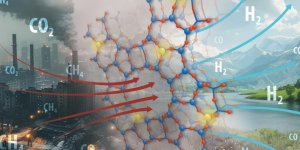
A chemical reaction can convert two polluting greenhouse gases into valuable building blocks for cleaner fuels and feedstocks, but the high temperature required for the reaction also deactivates the catalyst. »

Electrolytes that convert chemical to electrical energy underly the search for new power sources with zero emissions. Among these new power sources are fuel cells that produce electricity. »
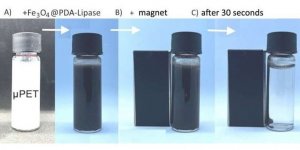
Researchers at the University of São Paulo (USP) have created a breakthrough nanotechnology method to remove hazardous micro- and nanoplastics from water, offering a potential solution to one of today’s most pervasive environmental issues. »
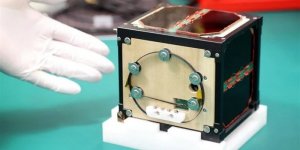
A historic milestone in satellite technology was achieved this week as Japan launched the world’s first wooden satellite, LignoSat, into space. »
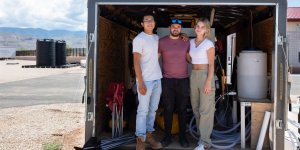
Researchers showed, for the first time, the possibility of water desalination without necessarily installing a large battery on site or connecting the water desalination system to the power grid. »

Professor Sam Stranks is developing next-generation solar cell technology, which could drive down renewable energy prices even further. »

Next-generation technologies, such as leading-edge memory storage solutions and brain-inspired neuromorphic computing systems, could touch nearly every aspect of our lives — from the gadgets we use daily to the solutions for major global challenges. »

A team led by scientists at the Department of Energy’s Oak Ridge National Laboratory identified and successfully demonstrated a new method to process a plant-based material called nanocellulose that reduced energy needs by a whopping 21%. »

Researchers in Australia have discovered that adding processed charred coffee grounds to concrete can make it 30% stronger, offering a potential solution to both construction and waste management challenges. »

Using common food dye, researchers make skin, muscle safely and reversibly transparent. »

The ORNL team studied a cobalt-based magnetic Weyl semimetal having a particular crystalline structure. »

Scientists have found an effective way to eliminate tiny fragments of microplastics that are infiltrating our bodies in alarming quantities through our food and beverages. »

Researchers at the University of British Columbia have developed a super-black wood-based material capable of absorbing over 99% of light. »
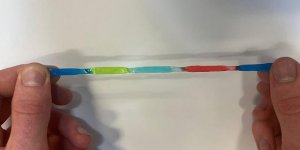
Researchers have developed soft, stretchable ‘jelly batteries’ that could be used for wearable devices or soft robotics, or even implanted in the brain to deliver drugs or treat conditions such as epilepsy. »

Substances called polyethylene glycols, or PEGs, are widely used in industry, medical, cosmetic and personal care products. The problem is, when they enter the environment and build up, they can harm ecosystems and natural resources. »

Scientists at Oregon State University have developed a new photocatalyst that rapidly and efficiently produces hydrogen from sunlight and water, presenting a promising tool for combating greenhouse gas emissions. »
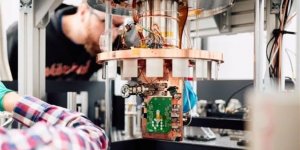
Oxford Ionics has unveiled a new chip that experts believe could significantly advance the development of effective quantum computers, potentially enabling the creation of the world's first useful quantum computer within three years. »

A research team led by the Department of Energy’s Oak Ridge National Laboratory has bridged a knowledge gap in atomic-scale heat motion. »

Researchers at the Department of Energy’s Oak Ridge National Laboratory have successfully demonstrated the first 270-kW wireless power transfer to a light-duty electric vehicle. »

Researchers have developed a low-cost, energy-efficient method for making materials that can capture carbon dioxide directly from the air. »

Researchers have developed a method to make adaptive and eco-friendly sensors that can be directly and imperceptibly printed onto a wide range of biological surfaces, whether that’s a finger or a flower petal. »

Researchers from the University of Cambridge have developed a method to produce very low-emission concrete at scale – an innovation that could be transformative in the transition to net zero. »

First 3D-printed defect-free tungsten components withstand extreme temperatures »

Thanks to human ingenuity and zero gravity, we reap important benefits from science in space. Consider smart phones with built-in navigation systems and cameras. »

Researchers at the Department of Energy’s Oak Ridge National Laboratory are developing battery technologies to fight climate change in two ways, by expanding the use of renewable energy and capturing airborne carbon dioxide. »

Researchers have found a way to super-charge the ‘engine’ of sustainable fuel generation – by giving the materials a little twist. »

The energy density of supercapacitors – battery-like devices that can charge in seconds or a few minutes – can be improved by increasing the ‘messiness’ of their internal structure. »

When hurricanes threaten tropical shores, “super grids” could come to the rescue. »

Scientists at the Department of Energy’s Oak Ridge National Laboratory have developed a method that demonstrates how fiber-reinforced polymer composite materials used in the automotive, aerospace and renewable energy industries can be made stronger and tougher to better withstand mechanical or structural stresses over time. »

Chemists at the Department of Energy’s Oak Ridge National Laboratory have invented a more efficient way to extract lithium from waste liquids leached from mining sites, oil fields and used batteries. »

An international team of scientists found a way to improve battery design that could produce safer, more powerful lithium batteries. »

Cotton gin waste, also known as cotton gin trash, is a byproduct of the cotton ginning process and occurs when the cotton fibers are separated from the seed boll. For cotton gin waste, the treasure is its hidden potential to transform silver ions into silver nanoparticles and create a new hybrid material that could be used to add antimicrobial properties to consumer products, like aerogels, packaging, or composites. »

NIH scientists use artificial intelligence called ‘P-GAN’ to improve next-generation imaging of cells in the back of the eye. »